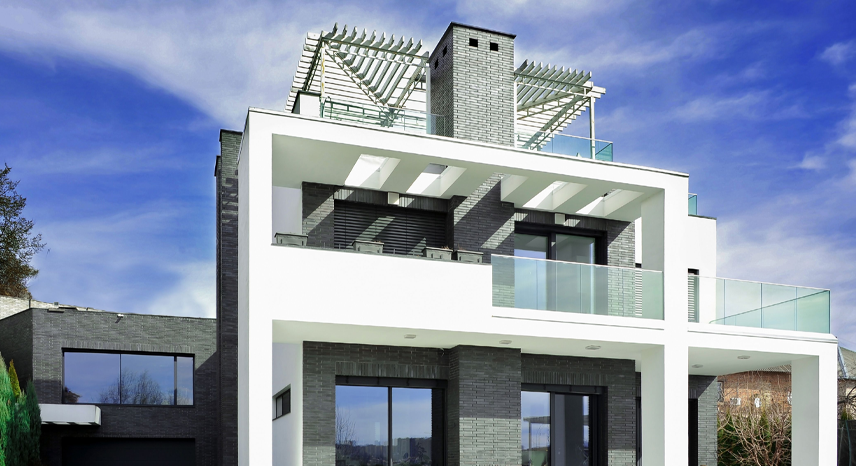Key Elements of Interior Design for Beautiful Spaces
Time 6 min(s) read
Interior design is more than just decorating a space; it is about creating a balanced, functional, and aesthetically pleasing environment.
Interior design is more than just decorating a space; it is about creating a balanced, functional, and aesthetically pleasing environment. Whether you are designing a home, an office, or any other space, the key elements of interior design help bring everything together in a natural and balanced way. Understanding these elements allows you to make thoughtful decisions about color, lighting, furniture placement, and other design aspects. With the right combination, any space can be transformed into an inviting and comfortable area that suits your needs and style. Even without professional experience, anyone can create a beautiful space by following basic design principles. You can achieve a cohesive and stylish look by keeping things simple and focusing on balance, color, texture, and lighting. Whether you prefer a modern, minimalist, or cozy traditional feel, these principles will help you bring your vision to life. In this blog, we will discuss the essential elements of interior design, explaining how they work together to create the perfect space.
1. Balance: Create Stability in Design
Balance in interior design ensures that a room feels stable and comfortable. It is achieved by distributing visual weight evenly across a space. There are three types of balance:
a) Symmetrical Balance
This involves mirroring elements on both sides of a room. It is commonly used in traditional designs.
b) Asymmetrical Balance
This creates a more casual and dynamic look by balancing different objects of similar visual weight.
c) Radial Balance
This is achieved by arranging elements around a central focal point, like a round dining table with evenly placed chairs.
By applying balance, you can create a space that feels pleasant and welcoming.
2. Harmony and Unity: Make Everything Work Together
Harmony and unity ensure that all design elements in a room complement each other. This is done by using a consistent color palette, similar materials, or repeating patterns. A well-coordinated space feels calm and organized, while a cluttered space with too many different styles can feel chaotic. Choosing a few key colors and materials will help maintain a cohesive look.
3. Rhythm: Bring Flow and Movement
Rhythm in interior design creates a sense of flow and movement, making a space feel more dynamic and visually appealing. It can be achieved in three main ways:
Repeating colors, patterns, shapes, or materials throughout a room helps create consistency and a sense of unity. For example, using the same accent color in cushions, rugs, and artwork ties the space together.
b) Progression
This involves gradually increasing or decreasing the elements' size, color intensity, or shape to create depth and interest. A common example is arranging decorative items, such as vases or candles, from smallest to largest.
c) Transition
Smoothly guiding the eye from one part of the room to another using curved furniture, archways, or a continuous color scheme ensures a natural visual flow.
4. Proportion and Scale: Keep Everything in the Right Size
Proportion refers to how well elements within a space relate to each other in size. The scale ensures that objects fit appropriately within a room. Large furniture in a small room can feel overwhelming, while tiny decor in a large space may look lost. Using furniture and decor in proper proportion helps create a well-balanced space that feels comfortable.
5. Color: Set the Mood and Atmosphere
Color is one of the most powerful tools in interior design. Using a well-balanced color scheme helps make a space feel inviting and cohesive. Here is how different colors can affect the space:
a) Warm Colors (Red, Orange, Yellow)
b) These colors create a cozy, energetic, and welcoming atmosphere. They are great for spaces where you want to encourage socializing, like living rooms or dining rooms.
c) Cool Colors (Blue, Green, Purple):
d) These colors bring a calm and relaxing feel to a room. They are perfect for bedrooms, bathrooms, or any area where you want to unwind and de-stress.
e) Neutral Colors (White, Gray, Beige):
f) Neutral colors provide a timeless and sophisticated look. They create a clean, peaceful backdrop, allowing other design elements to stand out and balancing the room.
6. Texture: Add Depth and Interest
Texture refers to how surfaces feel or appear. A mix of textures can make a room more engaging and visually appealing. For example:
1) Soft fabrics like rugs and cushions add warmth.
2) Smooth surfaces like glass or polished wood create a sleek and modern feel.
3) Rough textures like exposed brick or woven materials bring a natural touch.
7. Lighting: Enhance the Space and Mood
Lighting affects the atmosphere of a room and highlights design elements. There are three main types of lighting:
a) Ambient Lighting
b) This is the general lighting that fills the room, such as ceiling lights or overhead fixtures. It provides a comfortable, all-around light for daily activities.
c) Task Lighting
d) Task lighting is focused lighting used for specific tasks, such as desk lamps, reading lights, or kitchen task lighting. It ensures proper visibility where needed most.
e) Accent Lighting
f) Accent lighting emphasizes particular design elements, such as artwork, plants, or architectural details. It creates interest and draws attention to key features.
8. Space Planning: Make the Best Use of the Area
Proper space planning ensures that a room is both functional and comfortable. This involves considering:
1) The size and placement of furniture.
2) Clear pathways for movement.
3) The intended use of the space.
9. Focal Point: Draw Attention to Key Features
A focal point is the main feature that draws attention to a room. Having a strong focal point helps ground the design and gives the space a clear visual structure. It could be:
1) A fireplace.
2) A large piece of artwork.
3) A statement furniture piece.
10. Functionality: Design for Everyday Use
A space should be visually appealing and practical for daily life. When a space is both stylish and functional, it enhances comfort and convenience. Functionality in interior design involves:
1) Choose furniture that serves multiple purposes, like storage beds or extendable dining tables.
2) Ensuring there is enough space for movement and ease of use.
3) Select durable materials that can withstand regular use.
To conclude, interior design is a combination of different elements working together to create a balanced and beautiful space. You can transform any area into an inviting and functional environment by understanding balance, harmony, rhythm, proportion, and color. Texture and lighting add depth and mood, while space planning and a focal point ensure a well-organized and visually appealing design. Whether you are redecorating a single room or designing an entire home, keeping these key elements in mind will help you achieve a stylish and comfortable space. The best part is that you do not need to be a professional designer to apply these principles. Small adjustments, such as adding soft textures, using balanced colors, or improving lighting, can make a big difference. Creating a cohesive and harmonious interior is all about making thoughtful choices that reflect your style while ensuring comfort and functionality. Following these simple guidelines, you can bring everything together to design a space that feels like home.



